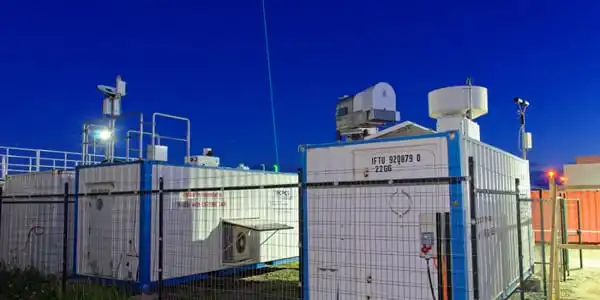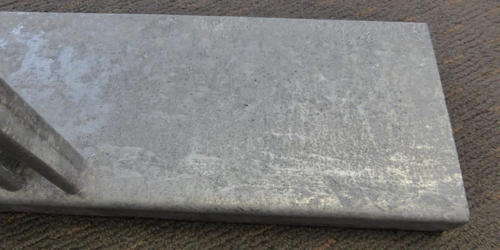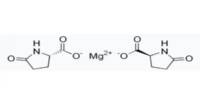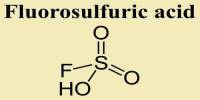The southern hemisphere’s clouds reflect more sunlight than the northern hemisphere’s clouds. The explanation for this is a greater occurrence of liquid water droplets as a result of an interaction between updrafts and cleaner surroundings. A team of researchers lead by the Leibniz Institute for Tropospheric Research (TROPOS) discovered a stronger influence of updrafts than expected in a study published in the journal Atmospheric Chemistry and Physics. Long-term measurements in Leipzig (Germany), Limassol (Cyprus), and Punta Arenas (Chile) enabled the new findings (Chile).
The results in Punta Arenas represent the longest dataset on cloud parameters recorded using ground-based lidar and radar in the Southern Ocean, spanning three years. As part of the DACAPO-PESO field experiment, an international team from the University of Magallanes (UMAG), TROPOS, and the University of Leipzig conducted comprehensive observations of aerosols, clouds, wind, and precipitation in the extreme south of Chile from 2018 to 2021. To put their findings into context, the researchers used two datasets from northern hemisphere sites, Leipzig and Cyprus. Data from the CyCARE field campaign in Cyprus were collected in partnership with researchers from the Cyprus University of Technology and the ERATOSTHENES Centre of Excellence in Limassol from 2016 to 2018.
The primary goal of the measurements in the pristine environment at South America’s southern tip was to investigate the atmosphere and learn more about the interactions between aerosols and clouds in a place where there has been little long-term data available so far. To remedy the paucity of observations, TROPOS brought two containers of the LACROS mobile atmospheric observatory, as well as instrumentation from the University of Leipzig, to Punta Arenas. The observations were made in collaboration with UMAG’s Laboratory for Atmospheric Research. LACROS’s gear includes a variety of lidars, radars, radiometers, sun photometers, and other instruments. Aerosol filter samples from Cerro Mirador, a 600 m high hill nearby, were used to supplement these measurements.
We have filled a long-existing measurement gap in the southern hemisphere with DACAPO-PESO. Now that data is freely available, it can be used to improve existing climate models.
Dr. Boris Barja
Originally, the measurements were intended to last a year as part of the “Year of Polar Prediction in the Southern Hemisphere” (YOPP-SH). However, because of the global COVID-19 epidemic and the resulting travel restrictions, the measurements were delayed by two years and will not be completed until the end of 2021. “From a scientific standpoint, this delay was quite beneficial,” explains Kevin Ohneiser, a Ph.D. student at TROPOS. Because Australia’s massive “Black Summer” wildfires of 2019/20 occurred during this time period.
Their smoke traveled more than 10,000 kilometers over the Pacific to South America, where it could be seen up to a height of 25 kilometers using laser-based measurements until the observations were completed at the end of 2021. Because the air in southern Chile is generally quite clean, this form of air pollution was quickly visible, emphasizing the global impact of big forest fires on climate.
“We have filled a long-existing measurement gap in the southern hemisphere with DACAPO-PESO. Now that data is freely available, it can be used to improve existing climate models” explains Dr. Boris Barja of UMAG, who played a critical role on-site in ensuring that the instruments could continue to operate despite Covid-19-related travel limitations.
The project has been scientifically highly successful, with more than ten follow-up initiatives, 20 conference papers, and ten research publications to date. Additional publications are nearing completion. Teresa Vogl, a Ph.D. student at the University of Leipzig, is currently developing a method for characterizing precipitation generation using a machine learning-based cloud radar algorithm.

The project’s recently completed major goal, however, was to explore the differences in thin cloud layers over Leipzig, Limassol, and Punta Arenas. The southern hemisphere’s atmosphere is cleaner, containing less aerosol particles, due to a significant percentage of oceans covering the Earth. This distinction is especially pronounced in the free troposphere, which consists of air masses at higher elevations that are unaffected by local pollution sources. Fewer particles in the atmosphere equals fewer ice nuclei.
However, it is precisely these that are required for cloud droplets to freeze into ice crystals at temperatures ranging from 0 to -40°C. As a result, clouds ice up significantly less in the southern hemisphere’s mid-latitudes and contain more liquid water at the same temperatures. This means that they have a different effect on incident sunlight as well as thermal radiation emitted from the Earth’s surface than they do in the north. “This is one reason why global climate models are still unable to accurately depict the radiation balance of the southern hemisphere,” TROPOS’s Dr Patric Seifert concludes.
The lack of ice nuclei caused the clouds over Punta Arenas to develop ice 10 to 40% less frequently than the clouds over Leipzig in the temperature range of -24 to -8°C. The ice mass produced by the liquid water clouds is likewise reduced by a factor of at least two.
Contrary to prior research, differences in atmospheric pollution are not the only cause of the observed discrepancies, particularly at lower temperatures. Investigations in southern Chile revealed that so-called gravity waves frequently influence clouds. The powerful westerly wind from the Pacific collides with the Andes mountains, which causes the gravity waves.
“We were able to detect clouds that had been influenced by these waves by measuring the up- and downwind winds within the clouds and filtering them out of the overall statistics by measuring the up- and downwind winds within the clouds. This allowed us to demonstrate that gravity waves, rather than a shortage of ice nuclei, are primarily responsible for the excess of cloud droplets at temperatures below -25°C” Dr. Martin Radenz of TROPOS, who just received a Ph.D. for his work on this issue, adds.
“However, it is uncertain whether this phenomena solely affects clouds in southern Chile at the moment.” What role do gravity waves play in the production of clouds and precipitation in other parts of the Southern Ocean? How frequently do gravity waves occur over the open ocean, which spans the majority of the Earth’s surface between 30 and 70 degrees south and is now only visible from satellites?
More observations of cloud air motion are needed to narrow down the involvement of ice nuclei in the apparent surplus of liquid water in clouds. In the near future, we intend to collaborate with our colleagues to examine similar concerns in other parts of the Southern Hemisphere, such as Antarctica and New Zealand, and ideally from research vessels as well. Because from space those observations are not possible at the moment.”
The two LACROS containers will return to TROPOS in Leipzig at the end of January and will then be prepared for their next deployment. Three new instruments will then be integrated within the scope of ACTRIS-D, Germany’s contribution to the European research infrastructure for aerosols, clouds, and trace gases. LACROS, armed with a new solar photometer, microwave radiometer, and 94 Ghz cloud radar, will go to the Swiss Alps in November to explore artificially manufactured ice clouds.
















